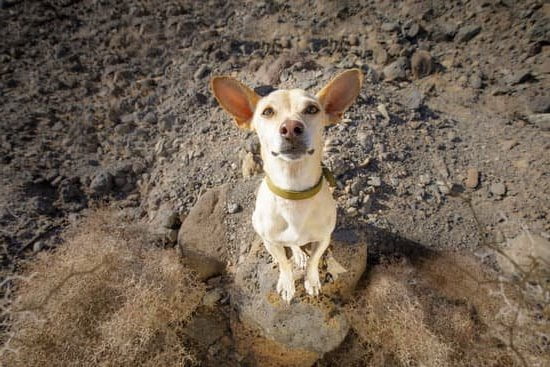Do you struggle with your dog pulling on the leash during walks? In this article, we will discuss how to train your dog to not pull while walking. Teaching your dog to walk without pulling is essential for a pleasant and safe walking experience for both you and your furry companion. We will explore the reasons behind this behavior, as well as provide effective techniques and tips for successful loose leash walking.
Understanding the behavior of why dogs pull when walking is crucial in addressing and correcting this issue. By establishing basic obedience training and using positive reinforcement, you can set a strong foundation for teaching your dog to walk nicely on a leash.
Additionally, choosing the right tools such as leashes and harnesses can make a significant difference in the training process. With structured training sessions and consistency, you can help your dog overcome the habit of pulling while walking, leading to a peaceful and enjoyable walk.
By following the guidelines outlined in this article, you will not only improve your dog’s behavior but also strengthen your bond with them through the rewards that come with successful loose leash walking. Let’s dive into the importance of loose leash walking and explore effective methods for achieving this goal with your beloved canine companion.
Understanding the Behavior
Dogs have a natural tendency to pull when they are excited, curious, or feeling anxious. This behavior can be traced back to their instincts as pack animals, where pulling on the leash was necessary for hunting and navigating their environment. Additionally, dogs are easily stimulated by their surroundings, which can lead to pulling behavior while on a walk.
To effectively train your dog to not pull while walking, it is crucial to understand the root cause of this behavior. By identifying the triggers that lead to pulling, such as seeing other dogs or catching a scent, you can address these specific situations during training sessions. Understanding the behavioral reasons behind pulling will allow you to tailor your training approach and effectively communicate with your dog.
Incorporating positive reinforcement techniques and redirecting your dog’s attention towards you can help mitigate the instinctual urge to pull. Establishing a strong bond with your dog and providing clear communication through training will ultimately lead to successful loose leash walking. With patience and consistency, you can reshape your dog’s behavior and enjoy peaceful walks together.
| Behavioral Triggers | Training Techniques |
|---|---|
| Excitement or curiosity | Positive reinforcement and redirection |
| Stimuli in the environment | Understanding the root cause of pulling behavior |
| Anxiety or fear | Establishing a strong bond with clear communication |
Basic Obedience Training
One of the most important skills to teach your dog is how to walk without pulling on the leash. Not only does this make walks more enjoyable for both you and your pet, but it also ensures their safety and the safety of others around them. In this section, we will discuss the basic obedience training needed to set the foundation for loose leash walking.
To begin training your dog to not pull while walking, it is essential to first establish basic obedience commands such as sit, stay, and come. These commands form the building blocks for loose leash walking and help your dog understand that they need to follow your lead. Teaching your dog these commands can be done through positive reinforcement techniques, such as using treats or praise when they successfully perform the command.
In addition to basic obedience commands, it is crucial to work on impulse control with your dog. This means teaching them to resist the urge to lunge or pull towards distractions while on a walk.
By practicing exercises that require your dog to focus on you rather than their surroundings, you can help them develop self-control and improve their ability to walk without pulling. With consistent training and patience, you can help your dog understand how to behave appropriately while on a leash.
| Command | Technique |
|---|---|
| Sit | Positive reinforcement with treats or praise |
| Stay | Consistent practice in different environments |
| Come | Using a long line for distance practice |
Tools and Equipment
When it comes to training your dog to not pull while walking, choosing the right tools and equipment can make a significant difference in the effectiveness of your training. The leash and harness you use can have a big impact on your dog’s behavior during walks, so it’s important to select the right gear for training purposes.
One of the most important tools for leash training is the leash itself. A standard 6-foot leash is typically recommended for loose leash walking. This length provides enough slack for your dog to explore and move comfortably without giving them too much freedom to pull ahead. Additionally, selecting a leash made from durable material is essential, as strong dogs may be able to break weaker leashes.
In addition to a proper leash, choosing the right harness can also play a crucial role in training your dog not to pull while walking. There are several types of harnesses available, each with its own benefits for loose leash walking.
Front-clip harnesses are designed to discourage pulling by redirecting your dog’s body when they tug on the leash. Head halters can also be effective in teaching dogs not to pull, as they gently steer their head in the direction you want them to go.
Overall, by selecting appropriate tools such as a well-fitted harness and a 6-foot leash made from sturdy material, you can set yourself up for success when teaching your dog how to walk without pulling. It’s essential that both the leash and harness are comfortable for your dog and allow for smooth movement while providing you with control during training sessions on how to train your dog to not pull while walking.
Techniques for Teaching Loose Leash Walking
Positive Reinforcement
Using positive reinforcement is an effective way to train your dog to not pull while walking. When your dog walks calmly beside you without pulling, be sure to reward them with praise, treats, or toys. This positive reinforcement helps your dog understand that walking without pulling is the behavior you want to see.
Redirection
Another technique for teaching loose leash walking is redirection. When your dog starts to pull on the leash, instead of yanking back, try gently redirecting their attention back to you. You can use a verbal cue, such as “heel” or “let’s go,” and encourage your dog to refocus on you. Offering a treat or a toy as a distraction can also help redirect their focus away from whatever is causing them to pull.
Consistency and Patience
Training your dog to not pull while walking requires consistency and patience. It’s important to be consistent in using positive reinforcement and redirection every time you take your dog for a walk. Remember that every walk is an opportunity for training, so stay patient and consistent with these techniques. Over time, with practice and repetition, your dog will learn how to walk calmly by your side without pulling.
By using these techniques consistently and positively reinforcing the desired behavior, you can effectively train your dog to not pull while walking. With patience and dedication, both you and your furry companion can enjoy peaceful and enjoyable walks together.
Practice Makes Perfect
Training your dog to not pull while walking requires consistency and structured training sessions. Here are some tips on how to effectively train your dog to walk on a loose leash:
1. Start with short, frequent training sessions: Keep the training sessions short, around 5-10 minutes, several times a day. This will help keep your dog focused and prevent frustration.
2. Use positive reinforcement: Whenever your dog walks without pulling, reward them with praise, treats, or their favorite toy. This will help reinforce the desired behavior of walking on a loose leash.
3. Gradually increase distractions: As your dog becomes more proficient at walking without pulling in a quiet environment, gradually introduce distractions such as other dogs, people, or stimulating scents. This will help your dog generalize the behavior in different situations.
4. Be consistent with your commands: Use the same verbal cues and hand signals every time you want your dog to walk without pulling. Consistency will help your dog understand what is expected of them.
5. Practice in different environments: Once your dog has mastered loose leash walking at home or in a familiar environment, practice in different locations such as parks, sidewalks, or busy streets.
Remember that every dog is unique and may progress at their own pace when learning how to walk without pulling. Patience and consistency are key when training your furry companion for loose leash walking.
By implementing structured training sessions and being consistent with positive reinforcement techniques and commands, you can teach your dog how to walk without pulling, making walks more enjoyable for both you and your pet.
Troubleshooting Common Issues
When training your dog to walk without pulling, it’s important to be prepared for common distractions and setbacks that may arise during the training process. Here are some tips for addressing these issues:
1. Identify and address distractions: Dogs are naturally curious and easily distracted, so it’s important to work on minimizing these distractions during training sessions. Start by practicing in a quiet, familiar environment before gradually introducing more challenging distractions, such as other dogs or new environments. Use treats and positive reinforcement to redirect your dog’s attention back to you when they become distracted.
2. Stay consistent with training: Consistency is key when it comes to teaching your dog not to pull while walking. Make sure to set aside time for regular training sessions, and be patient with your dog as they learn this new behavior. It’s also important to use the same commands and techniques each time, so that your dog understands what is expected of them.
3. Address setbacks with patience: It’s normal for dogs to have setbacks during the training process, especially when they encounter new or particularly tempting distractions. If your dog starts pulling again during a walk, remain calm and redirect their attention back to you using treats or a gentle tug on the leash. Remember that learning takes time, and setbacks are a natural part of the process.
By consistently working on these tips, you can set your dog up for success in walking without pulling. With patience and practice, you’ll be able to enjoy peaceful and enjoyable walks with your well-trained pup.
Remember that every dog is different, so be patient as you provide consistent guidance in how to train your dog not pull while walking.
The Benefits of Loose Leash Walking
Physical and Mental Benefits for Your Dog
When your dog learns to walk without pulling, it not only benefits you as the owner, but it also has positive effects on your dog’s physical and mental well-being. By walking calmly beside you, your dog will engage in a more relaxed and controlled manner of exercise, which can lead to improved muscle tone and cardiovascular health.
Additionally, practicing loose leash walking can also serve as a mental workout for your dog as they learn to focus on following your lead rather than being distracted by their surroundings.
Strengthening Your Bond With Your Dog
Teaching your dog to walk without pulling creates an opportunity for bonding and connection. When you both are in sync during walks, it fosters a sense of teamwork and communication between you and your furry companion. Walking becomes a shared activity that brings you closer together, ultimately strengthening the bond between human and pet.
Enjoying Peaceful Walks in Any Environment
Once your dog is trained to walk without pulling, you can both enjoy peaceful and enjoyable walks in various environments. Whether you’re strolling through a busy urban area or exploring nature trails, having your dog walk politely beside you makes the experience more pleasant for both of you. Not having to deal with constant pulling allows you to relax and take in the surroundings while keeping control over your dog’s behavior.
Conclusion
In conclusion, training your dog to walk without pulling is a rewarding experience that leads to enjoyable walks for both you and your furry companion. By understanding the reasons behind your dog’s pulling behavior and implementing basic obedience training, you can set the foundation for successful loose leash walking. Choosing the right tools and equipment, such as a well-fitted harness and leash, can also make a significant difference in your training efforts.
Using positive reinforcement and redirection techniques, you can effectively teach your dog to walk calmly by your side. Consistent practice and structured training sessions are essential for reinforcing good behavior and overcoming common issues that may arise during the training process. While it may require patience and dedication, the benefits of successfully training your dog to not pull while walking are well worth the effort.
Once your dog has mastered loose leash walking, you can look forward to peaceful and enjoyable walks together, free from the frustration of constant tugging and pulling. The strong bond between you and your dog will only strengthen as you both learn to communicate effectively during walks. Ultimately, the rewards of training your dog to walk without pulling extend beyond pleasant strolls – they lead to a happier, harmonious relationship with your canine companion.
Frequently Asked Questions
How Do I Train My Dog Not to Pull When I Walk?
Training your dog not to pull when walking requires consistency and patience. One effective method is using positive reinforcement, such as treats or praise, to reward your dog for walking calmly by your side. Another approach is using a front-clip harness or head halter to gently redirect your dog’s attention back to you when they start pulling.
Why Does My Dog Pull So Much When Walking?
There are several reasons why a dog may pull so much when walking. It could be due to excitement, lack of leash training, or simply because they haven’t learned the proper behavior.
Pulling can also be a result of a dog trying to lead the way or wanting to explore their surroundings. Understanding the underlying cause can help in addressing the issue effectively.
How Do I Stop My Dog From Extremely Pulling?
To stop your dog from extremely pulling, consider working with a professional trainer who can assess the situation and provide personalized guidance. Additionally, incorporating obedience training and teaching commands such as “heel” or “leave it” can help manage extreme pulling behavior. Consistent practice and positive reinforcement will be key in helping your dog learn to walk without pulling excessively.

Welcome to the blog! I am a professional dog trainer and have been working with dogs for many years. In this blog, I will be discussing various topics related to dog training, including tips, tricks, and advice. I hope you find this information helpful and informative. Thanks for reading!





